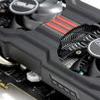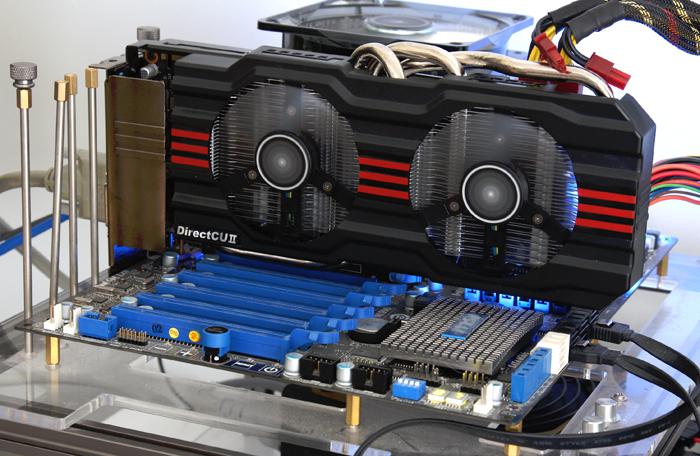Final words and conclusion
Final words and conclusion
ASUS has been rocking it hard lately with the DirectCU II models of graphics cards. The concept works out really well for them as it covers all the basic demands you as a gamer will require. Game performance, cooling, and noise are way above the default baseline and that's great. This TOP model takes it even a little further with a nice factory overclock. So from A to Z the variables for a successful product simply are done right.
Reference
But let's first discuss the GeForce GTX 660 Ti as reference product all by itself. NVIDIA has a product in their hands that might become the best selling product ever. Initially I did expect a new GPU for this product series, but they went ahead with the Kepler based GK104 that's being used in the GTX 670 and GTX 680 as well. It really proofs how sturdy and efficient that GPU is.
The release also confused me a little bit, as realistically the GeForce GTX 670 will become an obsolete product. The difference in performance are very close, especially the factory overclocker products (which all board partners send out for review). Bear in mind that a reference GeForce GTX 660 Ti is a good chunk slower then the GTX 670, all the factory OC based products are clocked roughly 100 MHz above the reference clock -- that's what brings it so close to that GTX 670. The 192-bit memory bus definitely has en affect, but being GDDR5 and running at roughly 6 Gbps really isn't as big of an Achilles heel as we expected it to be.
Game performance
The GeForce GTX 660 Ti is a card that is downright perfect for those gaming at 1920x1080/1200. Your performance will be near perfect and completely in balance with the games of 2012. In Battlefield 3 you are at roughly 49 frames per second on average with 4x AntiAliasing, 16xAF at Ultra quality settings. That's in 1920x1200 by the way. If we take Anno 2070 at the same resolution with the same settings in the very best quality we average out at 78 FPS. Crysis 2 with the High Quality texture pack in DX11 at Ultra settings .. roughly 53 FPS. These are the scores that will offer you a great gaming experience at that Full HD monitor resolution.
Powerrrrr
Power consumption then, it's low if you place it into context with the game performance. Roughly 135 Watt is what we measure during gaming. The card is allowed to peak to 150 Watts. NVIDIA has come a long way to make their products more efficient and the performance per watt ratio is done right.
Noise Levels
We as in us media have been hammering hard ever since the past year or two that cards became to noisy. From that moment onwards we have seen the industry follow and take a real interest into lowering noise levels. Good quality graphics cards these days are almost silent.
It is the same for this card with the DirectCU II cooler the noise levels for this product are nearly non-existent. The DirectCU cooler does a incredible job, in a closed chassis you won't be able to hear it. Directly related to the cooler is obviously temperatures. The card will idle at give or take 30~35 Degrees C and we measured a maximum of 60 Degrees C under full workload. Even overclocked it remained at these levels, the just spins a little harder.
Overclocking
NVIDIA put brakes on tweaking and overclocking. Your maximum added (software based) voltage will be 100 Mv. The Power Limiter will get you a little extra out of the board, an extra +14% on the power design is possible. Once the GPU reaches that power state or a certain heat level, it will start throttling down.
Regardless we where able to add another 100 MHz on the core. That in combo with the increased power limiter and an added 100Mv will make the card boost stable towards 1250 MHz. That certainly is nice. The memory can be overclocked as well, add +475 MHz and you'll end up at almost 7000 MHz. Your card already was 10% faster then reference and now is another 10% faster.
Concluding
Honestly I'm not sure whether or not you should invest in the TOP model of this card. A 'regular' DirectCU II version is available as well, simply crank open the power limiter and both cards will perform roughly equal. This is the problem with NVIDIA's severe and strict limitations. Most cards from any brand will perform roughly the same with the difference being a couple of frames per second here and there.
Therefor it is important to weigh in other factors like looks, aesthetics, noise levels and obviously pricing. ASUS shaves off a little of the pricing by introducing this as a 2GB model, whereas we secretly expected a 3 GB model. Truth be told, currently 2 GB is more then sufficient of you play games up-to a monitor resolution of 1920x1200. If you like to be a little more future proof then the extra 1 GB on the 3GB models certainly will not hurt, especially if you are the kind of guy that loves to install high-resolution texture packs etc. For gaming on monitors we feel the 3GB editions are mandatory, that's where framebuffer matters more.
So yeah, we like it. the GTX 660 Ti editions are great cards performing in the upper range of game performance. With its custom design, outstanding cooler and a price in the sub 300 EUR price range it is an impressive product. The TOP model we spotted for 295 EUR here in the Netherlands. The non TOP model (slightly lower clocks 967 MHz base-clock) is merely a tenner cheaper, so for that model you might as well pick up the faster clocked edition we say. Tweak it manually and both will perform roughly equal though.
We absolutely enjoyed testing the ASUS GTX 660 Ti DirectCU II TOP aka Asus GeForce GTX 660 TI-DC2T-2GD5 . It's a card we can and will most certainly recommend and approved.
- Leave/read comments on this product
- Sign up to receive a notice when we publish a new article
- Or go back to Guru3D's front page



